MiniatureBuildings.co.uk : Exploring model buildings of all sizes and styles
- Page (top)
- Home
-
About
Us -
Recent
Articles -
Scales &
Uses - Modelling
-
All
Articles
Miniature Buildings
(top of page)
Home
Articles
- Miniature
Buildings - Home +
-
Recent
Blogs -
All
Articles
.
Miniature Buildings
Some thoughts on building models of all types and sizes
Some thoughts on building models of all types and sizes
Welcome. If you have not visited Minature Buildings before can I suggest you begin with my Aims and Scope article or at the Home Page. If you have visited before - welcome back. I hope this article is of interest to you.
Thatch

The Cruck Cottage in Torthorwald, from the Engine Shed Blog.
I was originally prompted to write this by an article by Ann Sutcliffe in the Warner Publications' Hobbies & Crafts website. I did keep the link but it no longer works unfortunatly. Ann's method is to use Plumber's hemp, which she describes as a soft,slightly silky material resembling a skein of human hair. I'm not sure how often modern plumbers use this!
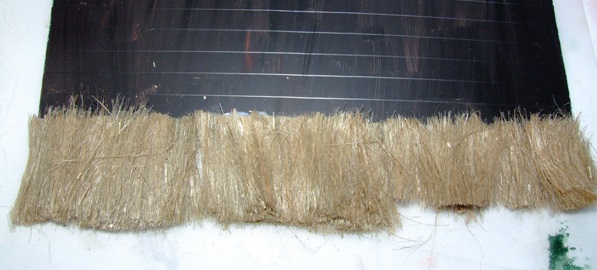
The article never got any further but I'm returning to it a long time later, prompted by a Facebook post and a new building along the road from our house. Almost all of my articles celebrate the craft work of modellers but I'm afraid I am going to be critical this time around.
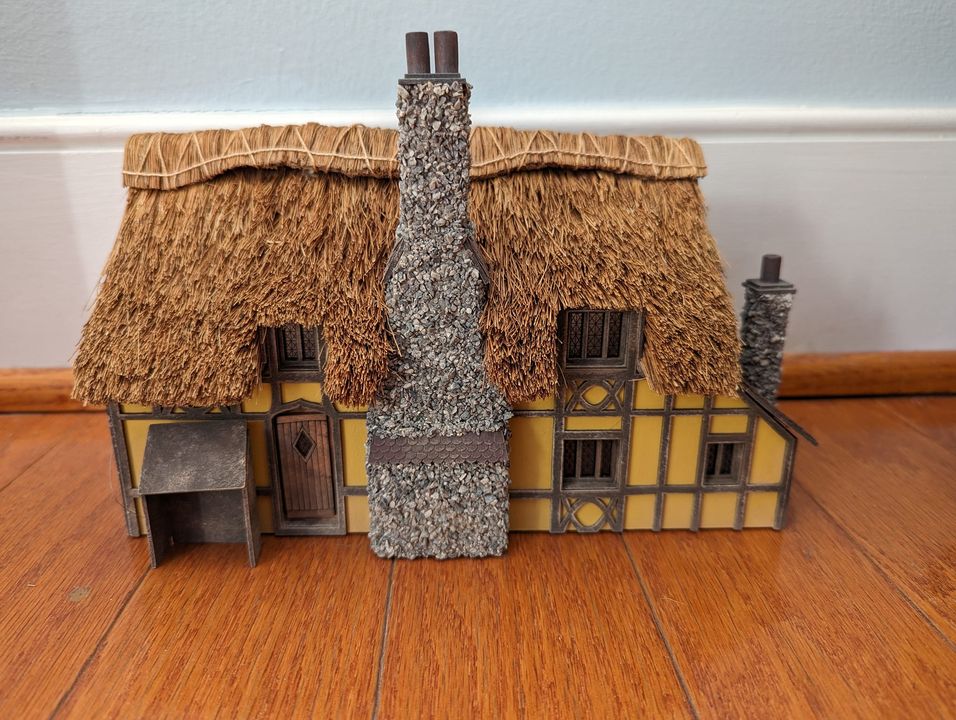
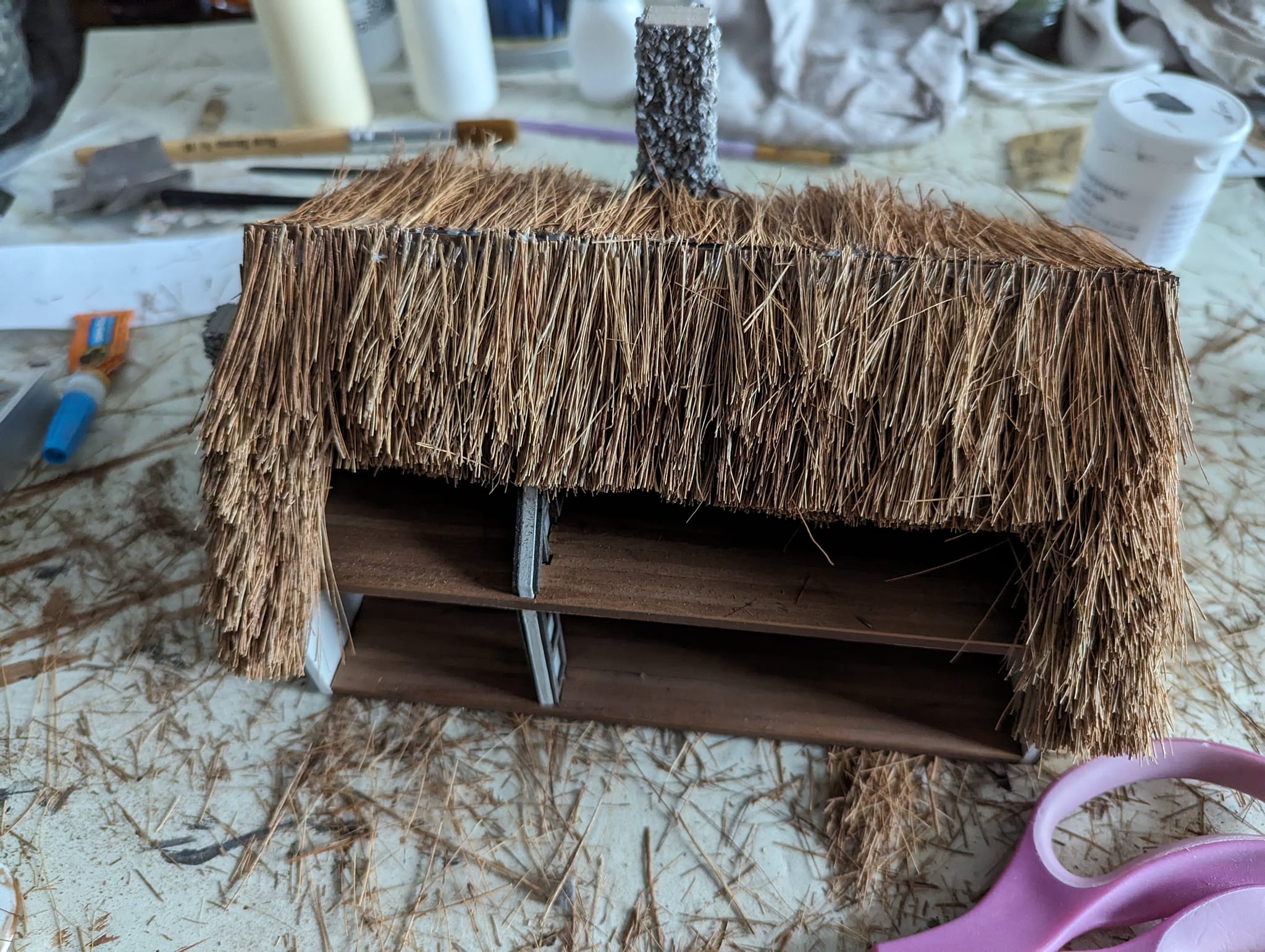 These two images come from a Facebook post by 'CA'
These two images come from a Facebook post by 'CA'
CA's model is in 1/48 scale. Her work got 141 likes and a lot of favourable comments. I'm afraid I disagree. I do admire her effort and commitment (and the supportive approach of the commentators) but to my eyes it looks much too rough and out of scale.

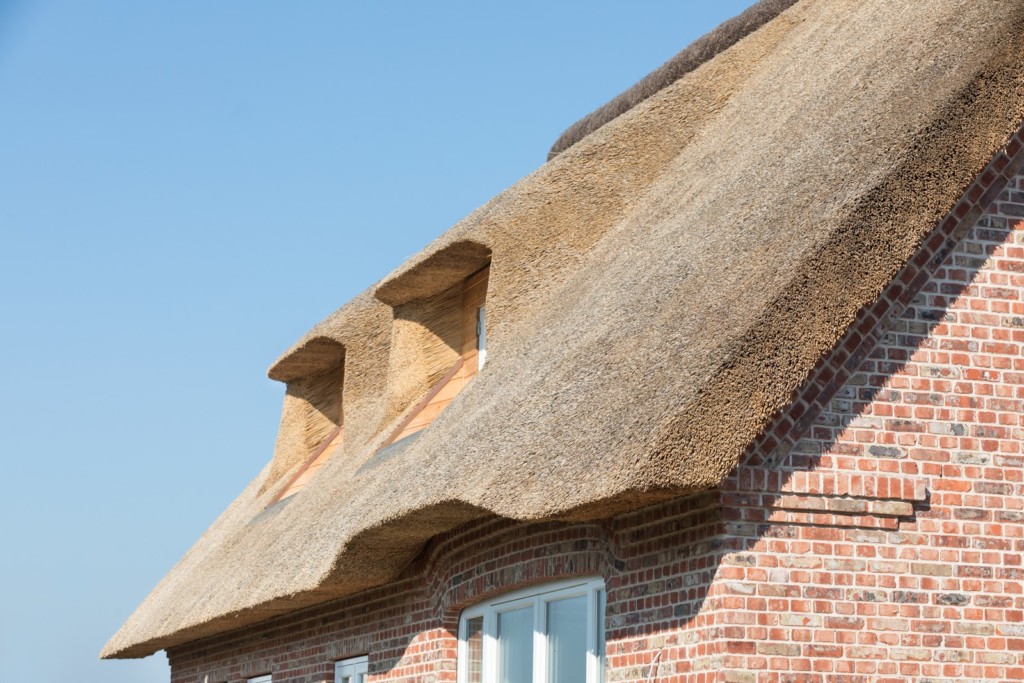 Two examples of new thach
Two examples of new thach

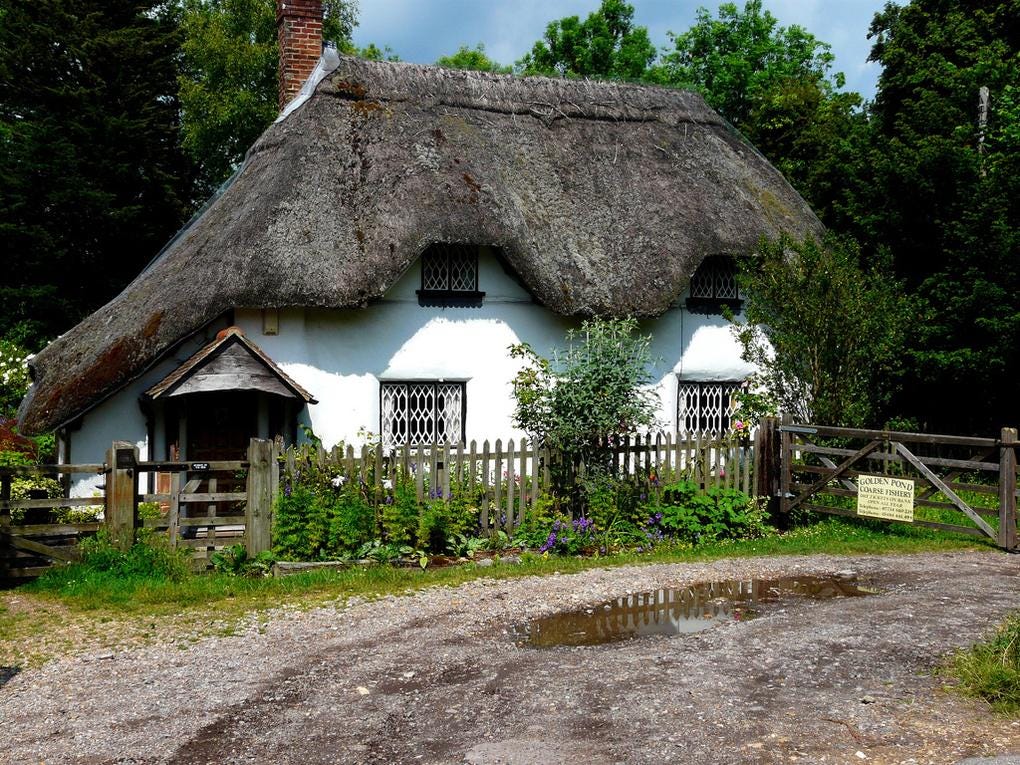 Even old thatch does not look so rough
Even old thatch does not look so rough
Whether to go for scale or effect is the subject of another article but it seems to me that in this case (and in Ann's plumbers' hemp method) the aim has been neither, but to reproduce in miniature the process of thatching. Watching the thatchers work near me it was noticeable how much time they spent trimming the straw or reeds they were using in order to create a nearly smooth surface.
 The spiky effect is visible only part way through the process
The spiky effect is visible only part way through the process
CA is not alone in trying to model thatch using thin fibres. If you search for "how to model thatch" you will find several tutorials along the same lines.

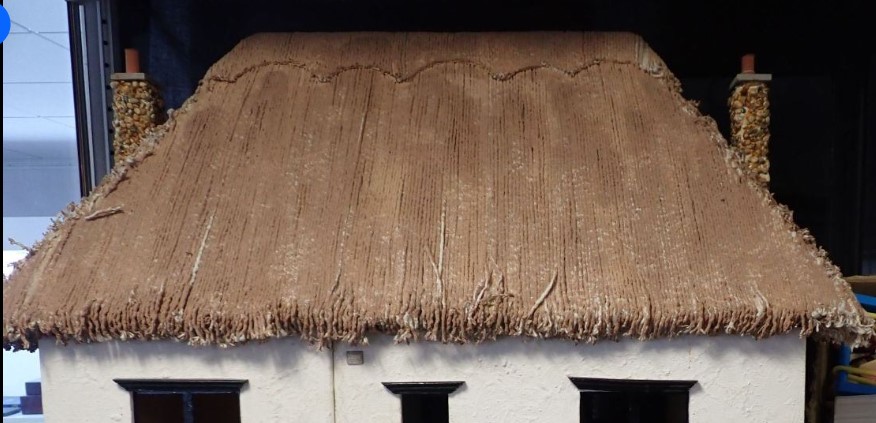 These two examples are not from tutorials but from a recent facebook pot; the first example uses 'doll hair', the second uses string.
These two examples are not from tutorials but from a recent facebook pot; the first example uses 'doll hair', the second uses string.
Several people have chosen to use a fibre/fabric sheet material, including "the liners you can get for hanging baskets" and "a rough fur brushed downwards".


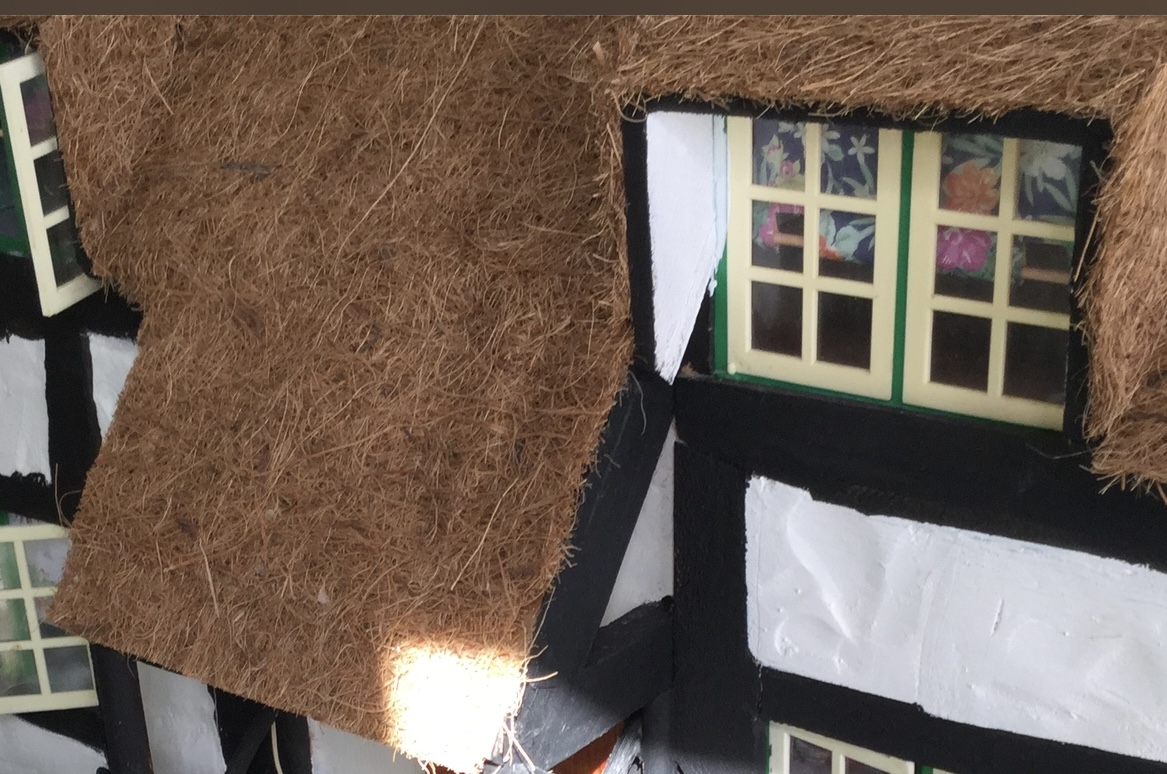
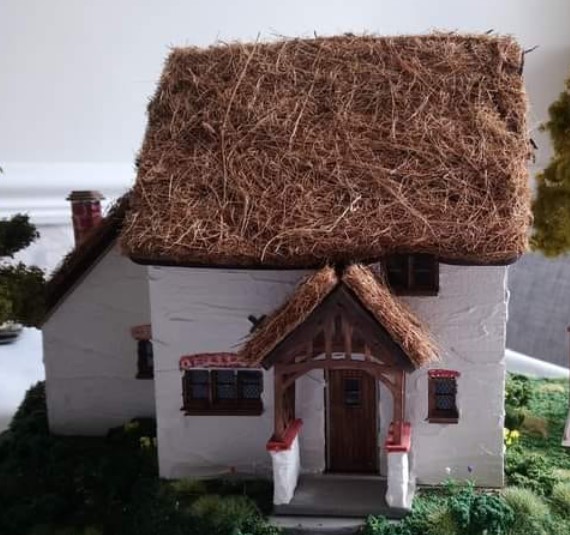
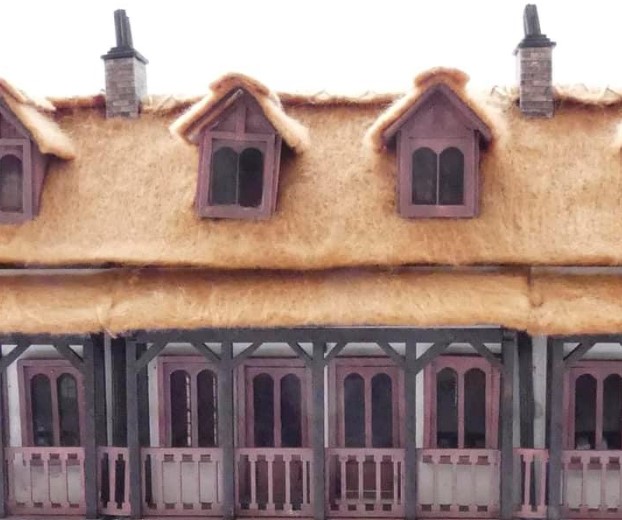
I think this is probably an improvement on using actual fibres but even the modellers posting their work say "it's not perfect but it worked ok I think" or "not perfect but not bad". It is clearly a very challenging surface to model. So, if thin fibres or fabric sheets are not the solution, what might work? One suggestion is to use plasticine: "For my 1/76 scale, I used plasticine and then painted it with acrylic paints. May have pushed some sand into it before painting for texture."
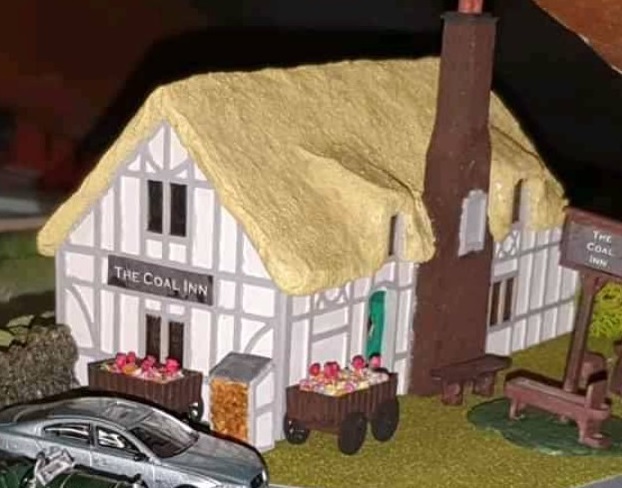 An interesting idea but to my eyes it is not sharp enough
An interesting idea but to my eyes it is not sharp enough
One contributor to a railway modelling forum said he had "used Das modelling clay and brushed it with a paint brush" but did not provide a photo showing how well it worked. I suspect this is the way to go - at least in the smaller scales. At 1/12 it may be possible to get the right effect using a miniature thatching technique but below that I think we have to give up on the idea that a model should use the same technique as full size prototypes. Most small scale modellers do not use real wooden beams, real corrugated metal, real tiles etc but create the effect with plastic, paper or clay. I am away from my workbench at the moment but will certainly experiment when I get home.
My search for alternatives led me to the model railway engineer site which shares my view that "recreating [thatched roofs] in miniature for a model railway or diorama is incredibly difficult [and that] ... other techniques ... using strands of string or drawing a comb across clay don’t come close to the realistic texture". The author, Andy Leaning, says that "one modeller however has nailed it".
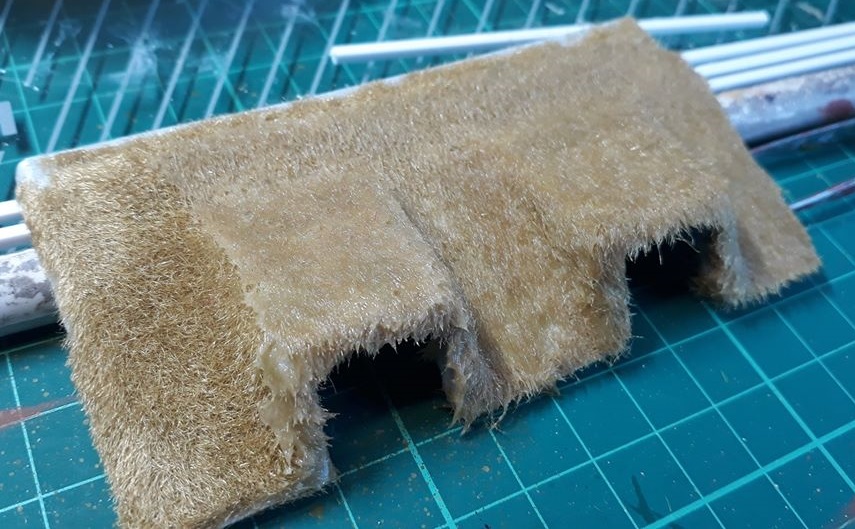 I suspect this image from Andy's article is of work in progress
I suspect this image from Andy's article is of work in progress
The modeller in question turns out to be the prolific John Simpson whose work I much admire and follow. The technique is "To [a rigid substrate] he adds a thick, dense, layer of 6mm static grass held down with PVA glue, ....This is then left to set. Next he applies a further coating of PVA. John recommends painting this on in a downloads direction and flattening the grass down as you go. Let this dry and tidy up any stray strands, cutting or filing them down. Finally paint and weather to your desired colour." The process is fully illustrated in John's Facebook page.
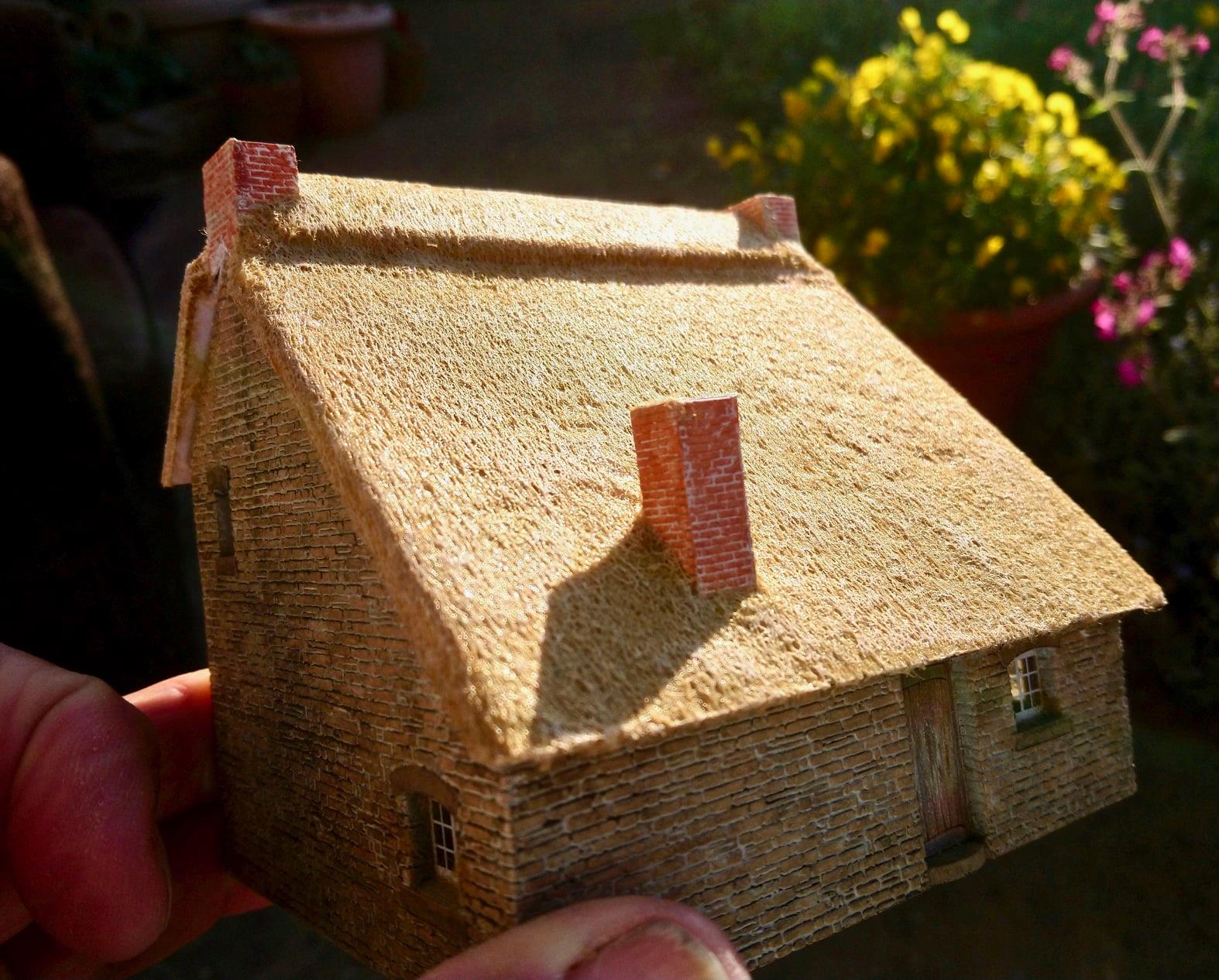
 This example comes from John's tutorial and his "John's garage" diorama.
This example comes from John's tutorial and his "John's garage" diorama.

The Cruck Cottage in Torthorwald, from the Engine Shed Blog.
I was originally prompted to write this by an article by Ann Sutcliffe in the Warner Publications' Hobbies & Crafts website. I did keep the link but it no longer works unfortunatly. Ann's method is to use Plumber's hemp, which she describes as a soft,slightly silky material resembling a skein of human hair. I'm not sure how often modern plumbers use this!

The article never got any further but I'm returning to it a long time later, prompted by a Facebook post and a new building along the road from our house. Almost all of my articles celebrate the craft work of modellers but I'm afraid I am going to be critical this time around.

 These two images come from a Facebook post by 'CA'
These two images come from a Facebook post by 'CA'
CA's model is in 1/48 scale. Her work got 141 likes and a lot of favourable comments. I'm afraid I disagree. I do admire her effort and commitment (and the supportive approach of the commentators) but to my eyes it looks much too rough and out of scale.

 Two examples of new thach
Two examples of new thach

 Even old thatch does not look so rough
Even old thatch does not look so rough
Whether to go for scale or effect is the subject of another article but it seems to me that in this case (and in Ann's plumbers' hemp method) the aim has been neither, but to reproduce in miniature the process of thatching. Watching the thatchers work near me it was noticeable how much time they spent trimming the straw or reeds they were using in order to create a nearly smooth surface.
 The spiky effect is visible only part way through the process
The spiky effect is visible only part way through the process
CA is not alone in trying to model thatch using thin fibres. If you search for "how to model thatch" you will find several tutorials along the same lines.

 These two examples are not from tutorials but from a recent facebook pot; the first example uses 'doll hair', the second uses string.
These two examples are not from tutorials but from a recent facebook pot; the first example uses 'doll hair', the second uses string.
Several people have chosen to use a fibre/fabric sheet material, including "the liners you can get for hanging baskets" and "a rough fur brushed downwards".





I think this is probably an improvement on using actual fibres but even the modellers posting their work say "it's not perfect but it worked ok I think" or "not perfect but not bad". It is clearly a very challenging surface to model. So, if thin fibres or fabric sheets are not the solution, what might work? One suggestion is to use plasticine: "For my 1/76 scale, I used plasticine and then painted it with acrylic paints. May have pushed some sand into it before painting for texture."
 An interesting idea but to my eyes it is not sharp enough
An interesting idea but to my eyes it is not sharp enough
One contributor to a railway modelling forum said he had "used Das modelling clay and brushed it with a paint brush" but did not provide a photo showing how well it worked. I suspect this is the way to go - at least in the smaller scales. At 1/12 it may be possible to get the right effect using a miniature thatching technique but below that I think we have to give up on the idea that a model should use the same technique as full size prototypes. Most small scale modellers do not use real wooden beams, real corrugated metal, real tiles etc but create the effect with plastic, paper or clay. I am away from my workbench at the moment but will certainly experiment when I get home.
My search for alternatives led me to the model railway engineer site which shares my view that "recreating [thatched roofs] in miniature for a model railway or diorama is incredibly difficult [and that] ... other techniques ... using strands of string or drawing a comb across clay don’t come close to the realistic texture". The author, Andy Leaning, says that "one modeller however has nailed it".
 I suspect this image from Andy's article is of work in progress
I suspect this image from Andy's article is of work in progress
The modeller in question turns out to be the prolific John Simpson whose work I much admire and follow. The technique is "To [a rigid substrate] he adds a thick, dense, layer of 6mm static grass held down with PVA glue, ....This is then left to set. Next he applies a further coating of PVA. John recommends painting this on in a downloads direction and flattening the grass down as you go. Let this dry and tidy up any stray strands, cutting or filing them down. Finally paint and weather to your desired colour." The process is fully illustrated in John's Facebook page.

 This example comes from John's tutorial and his "John's garage" diorama.
This example comes from John's tutorial and his "John's garage" diorama.
As always, e-mail Miniature Buildings at
MiniatureBuildingSite@gmail.com if you have something to add. Comments, criticisms, errors you have spotted, extra thoughts, pictures, or even complete articles for inclusion in the Miniature Buildings site are all welcome. Or if you would like to be added to my mailing list to hear when a new article is published.
David, April 2024